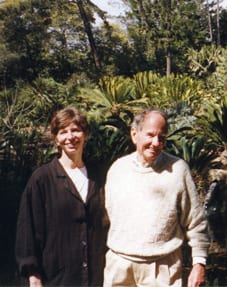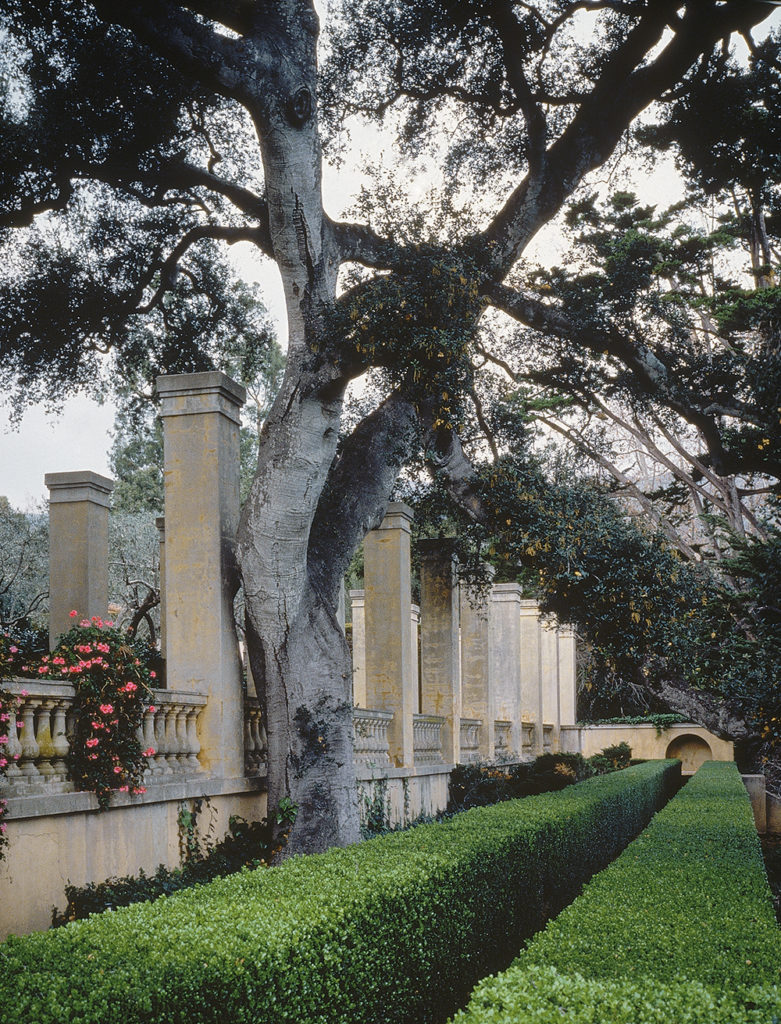Kellam de Forest, Santa Barbara, California (2009)

“He was one of the first to really embrace the native landscape in California,” says Kellam de Forest about his father, the landscape architect Lockwood de Forest Jr. (1896–1949). “Prior to my father there was much more emphasis on water-intensive Beaux-Arts landscapes. Father didn’t feel they fit the climate.”
Lockwood de Forest’s ideas, like those of his East Coast contemporary Fletcher Steele (1885–1971), laid the foundation for modernist landscape design. “In their spare, architectonic treatment, emphasis on outdoor living, strong functional and visual relationship of exterior and interior, and ease of maintenance, de Forest’s gardens would influence a younger group of West Coast designers, among them Thomas Church (1902–1978) and Garrett Eckbo (1910–2000),” observes Robin Karson in A Genius for Place: American Landscapes of the Country Place Era. Today Kellam de Forest lives with his wife Peggy in his birthplace, Santa Barbara, where he is known as a champion of his father’s design legacy. Although he has no design training save for what he absorbed from his father “through osmosis,” for the past two decades de Forest, an authenticity consultant for films and television, has lent his time to this cause—leading landscape tours, writing letters, and spending countless hours at public hearings. “If all the work of the landscape architects through history were just plowed under or paved over, future designers would have no idea of what our history was,” he says.
As recently as spring 2009, he was protesting a proposal to build structures in the meadow at the Santa Barbara Botanic Garden, designed by his father and Beatrix Farrand (1872-1959). “The meadow was designed to capture an awesome view of a mountain peak. Borrowing such dramatic views and incorporating them into the designed landscape is one of my father’s hallmarks. Any structure completely destroys the scale,” de Forest explains. “So, once again, I am going to hearings. But we have a lot of public support.” De Forest’s longest-running preservation struggle focuses on Val Verde, a Montecito villa with an exotic landscape his father designed for Wright Ludington in the 1920s and 30s. In 1994, the property’s last private owner, Warren Austin, established a foundation to open it as a public garden. But local residents, fearing an influx of visitors, have so far denied permission. The property is now in private hands.

Nearby Casa del Herrero, the George Steedman estate, with a landscape designed by de Forest, landscape architect Ralph Stevens, and horticulturist Peter Reidel between 1925 and 1933, has fared better. The Casa del Herrero Foundation has maintained the site as a public museum since 1993, and in January 2009 the U.S. Department of the Interior designated the entire property a National Historic Landmark. “The foundation is doing a wonderful job of managing the place,” Kellam de Forest reports. “I wasn’t called upon to do anything, although I support it by being a member and have given tours and lectures on my father’s work.”
Aside from the gardens at Lotusland, the Ganna Walska estate, where his father was one of several contributing designers, “those are the three major examples of his local work,” de Forest says. “But every now and then people call me and ask, ‘Do I have a de Forest garden?’ And I’ll go out and have a look.”
—Jane Roy Brown, former LALH Director of Educational Outreach.